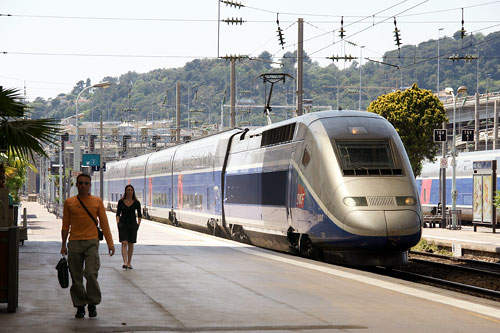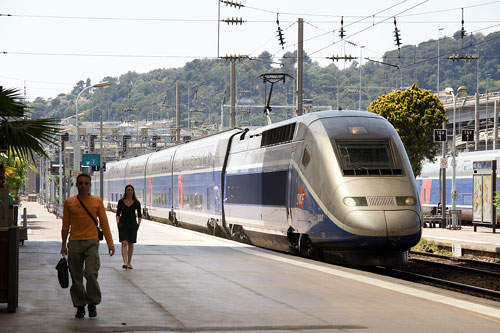Are you planning a trip to France and want to make the most out of your transportation experience? Look no further! In this article, you will discover everything you need to know about navigating France’s high-speed train system. From the convenience of online booking to the comfort and speed of traveling on these trains, you will soon understand why they are a popular choice for both locals and tourists alike. So, sit back, relax, and get ready to embark on a journey through France like never before!
Booking a Ticket
When it comes to booking a ticket for France’s high-speed train system, there are a few important steps to follow. The first step is choosing a train station. France has an extensive network of train stations, so consider your starting point and destination to determine the most convenient station to use. Once you’ve selected a train station, the next step is selecting a ticket type. TGV offers several ticket options, including standard, flexible, and business class fares. Choose the one that best suits your needs and budget.
After choosing a ticket type, it’s time to check the train schedules. TGV trains run frequently throughout the day, but it’s still important to check the schedules to ensure there’s a train available at your desired departure time. This can be done online or at the train station. Once you’ve found a suitable train, it’s time to make a reservation. Reservations are especially important for TGV trains, as they often get fully booked during peak travel times. You can make a reservation online, at a train station, or through a travel agency.
If you prefer the convenience of purchasing tickets online, TGV offers an easy and user-friendly online booking system. Simply visit their website, enter your travel details, choose your ticket type, and make your payment. Once your tickets are purchased, you’ll receive a confirmation email with your e-tickets. Be sure to print them out or have them available on your mobile device when you board the train.
Preparing for the Journey
Before embarking on your journey, it’s important to take a few steps to ensure a smooth experience. First, check the luggage restrictions. TGV trains have limited space for luggage, so it’s essential to pack accordingly. Most TGV trains allow passengers to bring one standard-sized suitcase and one piece of hand luggage. Be sure to check the specific restrictions for your train to avoid any issues.
On the day of your journey, make sure to arrive at the train station in advance. It’s recommended to arrive at least 30 minutes before your departure time to allow for check-in and security procedures. This will help you avoid any last-minute rush or potential delays. Once you’re at the train station, familiarize yourself with the security procedures. Similar to airports, TGV trains have security measures in place to ensure the safety of passengers. Pay attention to any announcements or signs regarding security checks and follow the instructions of the security personnel.
When it’s time to board the train, make your way to the designated platform. TGV trains are clearly marked with their destination, so it’s easy to find the right train. Take a moment to double-check the train number and departure time to ensure you’re boarding the correct train. Once on board, find your seat and settle in for a comfortable journey.
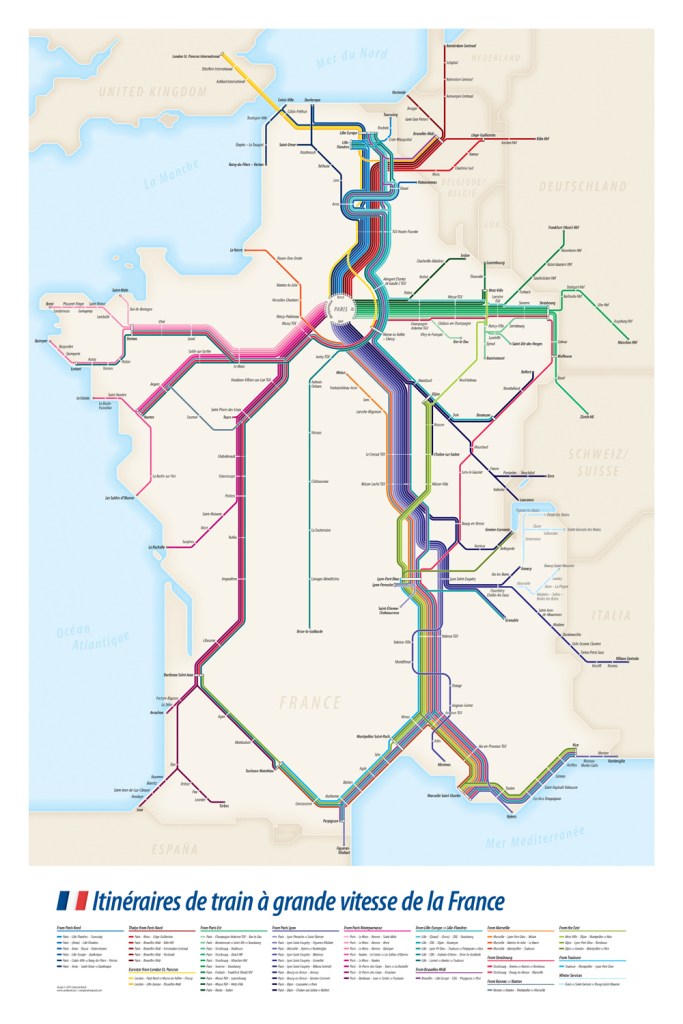
Onboard Comforts
TGV trains offer a range of amenities to make your journey comfortable and enjoyable. First and foremost, you have the option to select your seat when booking your ticket. TGV trains have both standard and first-class seating options, each providing a comfortable and spacious environment. First-class seating offers extra legroom and a quieter atmosphere, perfect for those seeking a more luxurious experience.
Throughout the train, you’ll find amenities such as restrooms, drinking water stations, and designated areas for luggage storage. For those who need to stay connected, TGV trains also offer Wi-Fi onboard. You can easily access the internet to stay connected with loved ones, catch up on work, or simply browse the web during your journey.
While on the train, it’s important to pay attention to any announcements made by the train staff. They will provide important information regarding upcoming stops, connections, and any changes to the schedule. Additionally, TGV trains are equipped with power outlets, allowing you to charge your electronic devices and stay powered up throughout the journey.
Traveling with Pets
For pet owners, it’s important to understand the regulations and requirements for traveling with your furry friends on TGV trains. Pets are allowed on TGV trains, but there are certain guidelines that must be followed. Small pets, such as cats and small dogs, can travel with you in a carrier that fits under your seat. Larger dogs, on the other hand, must be muzzled and kept on a leash at all times.
When booking your ticket, make sure to indicate that you’ll be traveling with a pet. This will ensure that you’re seated in a pet-friendly area. It’s also important to consider the comfort and well-being of your pet during the journey. Make sure to bring essential items such as food, water, and any necessary medication. Additionally, it’s advisable to take your pet for a short walk before boarding the train to help them relax and minimize any potential discomfort during the journey.
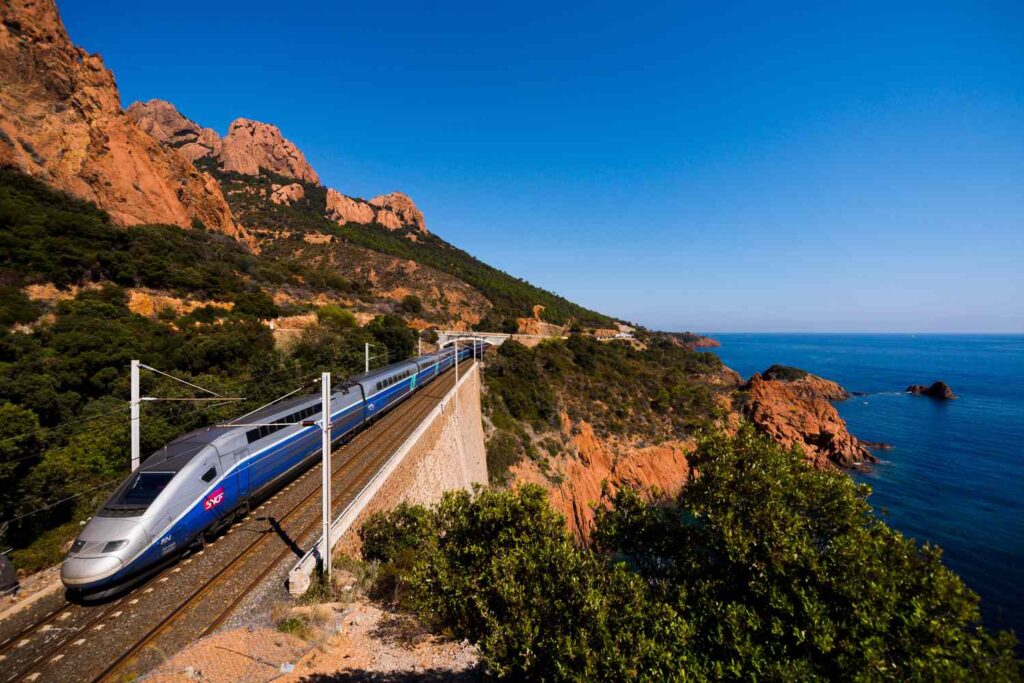
Experiencing TGV
TGV, which stands for Train à Grande Vitesse, is France’s high-speed train network. Understanding TGV and what it has to offer can greatly enhance your travel experience. TGV trains are known for their speed, comfort, and efficiency, making them an ideal choice for long-distance travel within France and beyond.
TGV operates on an extensive network of routes, connecting major cities and regions across France. Whether you’re traveling from Paris to Lyon, Bordeaux to Marseille, or any other combination of destinations, TGV has you covered. Each route offers a unique opportunity to experience the diverse landscapes and sights of France.
In addition to its extensive route network, TGV also provides a range of services to ensure a pleasant journey. Onboard, you’ll find amenities such as comfortable seating, Wi-Fi access, power outlets, and dining options. Some TGV trains even offer dedicated family areas, where parents can keep their children entertained during the journey.
Exploring Regional Trains
While TGV is the flagship high-speed train service in France, there are also regional trains that offer a convenient and affordable way to explore different parts of the country. Regional trains, also known as TER trains, operate on shorter routes and connect smaller towns and villages.
Understanding regional trains can greatly enhance your travel experience in France. These trains offer a more local and intimate perspective on the country, allowing you to explore lesser-known destinations and experience the charm of the French countryside.
Regional trains operate in various regions of France, including popular tourist destinations such as Provence, Brittany, and Alsace. Each region has its own unique characteristics and attractions, making it worth considering regional trains as part of your travel plans.
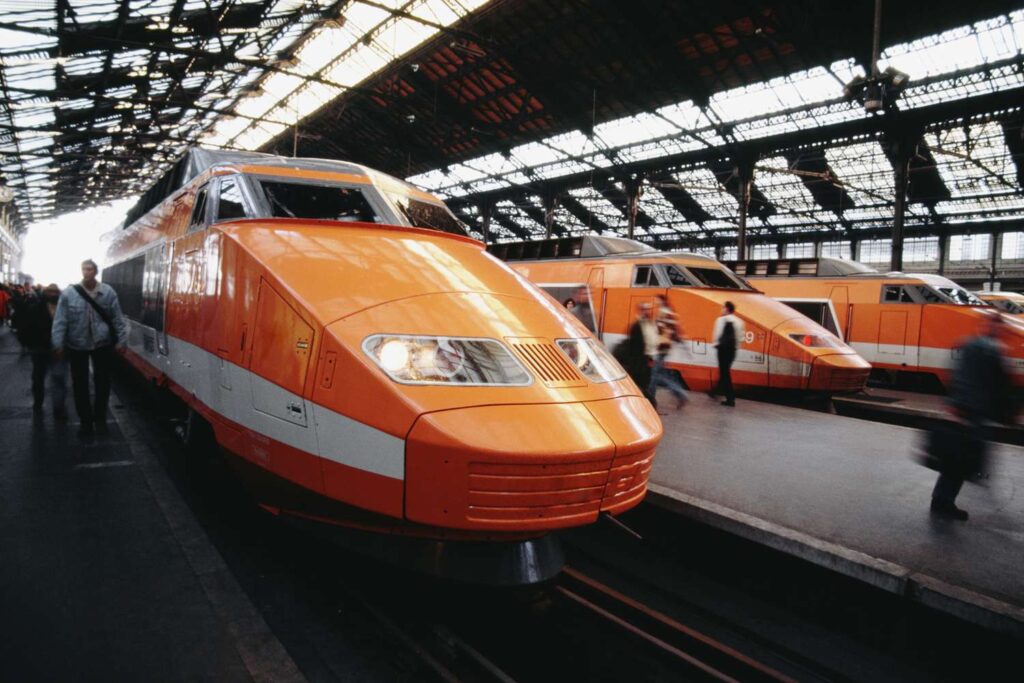
Navigating Train Stations
Train stations can sometimes be overwhelming, especially if you’re unfamiliar with the layout or don’t speak the local language. However, with a little bit of knowledge, navigating train stations in France can be a breeze.
One of the first things to understand is the signage within train stations. Most train stations have clear signage in both French and English, making it easy to find your way. Look out for signs indicating the platforms, ticket counters, restrooms, and other facilities. If you’re unsure about a specific location, don’t hesitate to ask the friendly staff at the information desks.
Train stations in France often have self-service kiosks where you can purchase tickets, check train schedules, and print out your e-tickets. These kiosks are user-friendly and offer a convenient alternative to waiting in line at the ticket counter. Simply follow the on-screen prompts, choose your desired options, and make your payment using a credit card.
Once you’ve obtained your tickets, it’s time to navigate through the platforms. Train stations typically have multiple platforms, so make sure to check the departure board for your train number and platform assignment. Follow the signs or ask for assistance to find your way to the correct platform. Be aware of any platform changes or delays that may be announced, as this will affect your boarding time.
Making Connections
If your travel itinerary involves transferring between different trains, it’s important to understand how to make connections smoothly. Transferring between trains can be a seamless process if planned properly, but it can also be stressful if you’re not prepared.
When planning your journey, make sure to allow enough time for connections. The recommended time allowance for connections varies depending on the train stations and the distance between them. In general, it’s advisable to leave at least 15-30 minutes between trains to account for potential delays or unexpected circumstances.
For larger train stations, navigating between trains may involve walking longer distances or using escalators or elevators. It’s helpful to familiarize yourself with the layout of the train station in advance, either through maps or online resources. If you’re unsure about the directions or need assistance, don’t hesitate to ask the train station staff for guidance.
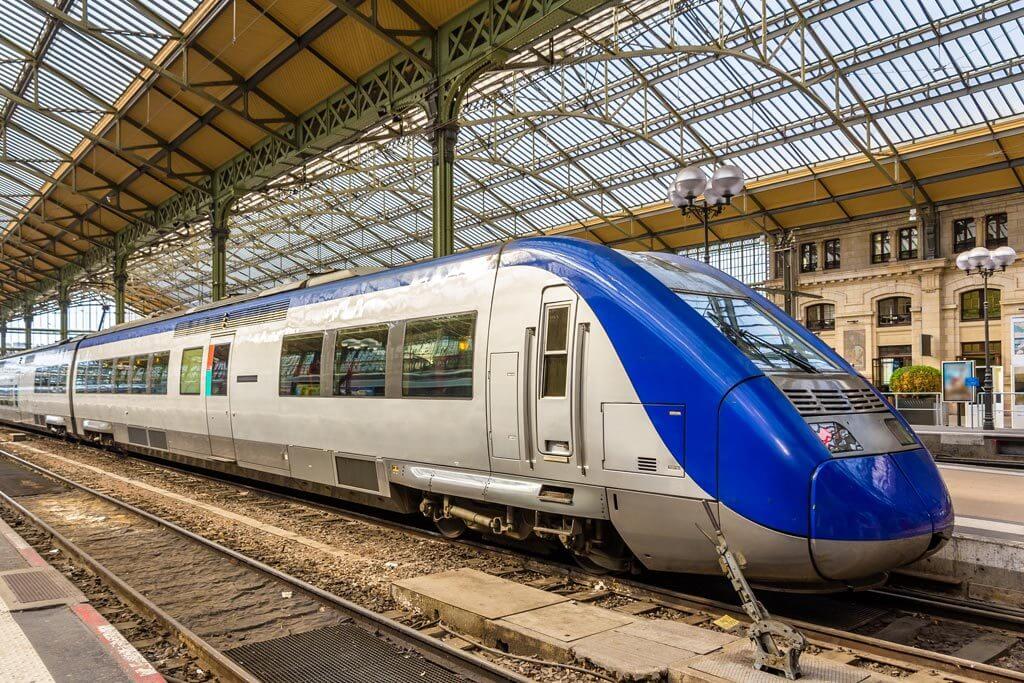
Understanding Rail Passes
Rail passes can be a convenient and cost-effective way to travel around France by train. They offer flexibility and the ability to explore multiple destinations within a certain timeframe. Understanding the different types of rail passes, their benefits and restrictions, and how to purchase and activate them is essential for a smooth travel experience.
France offers a variety of rail passes, including the Eurail Pass, InterRail Pass, and the France Rail Pass. Each pass has its own features and is designed for different types of travelers. Eurail and InterRail passes are generally available to non-European residents, while the France Rail Pass is specifically for travelers exploring France.
Benefits of rail passes include unlimited travel within a specific region or timeframe, discounted fares on certain train services, and flexibility to hop on and off trains as you please. However, it’s important to note that some high-speed and international trains require reservations, which may come at an additional cost.
To purchase a rail pass, you can either do it online or at a train station. Make sure to bring all the necessary identification and travel documents, as they may be required during the purchase process. Once you have your rail pass, don’t forget to activate it before your first journey. This can usually be done at a ticket counter or through a self-service kiosk.
Dealing with Delays & Cancellations
While France’s high-speed train system is known for its efficiency, delays and cancellations can occasionally occur due to unforeseen circumstances such as severe weather, technical issues, or strikes. It’s important to know your rights as a passenger and how to handle these situations.
As a passenger, you have certain rights in case of delays or cancellations. If your train is delayed for more than 30 minutes, you’re entitled to compensation, such as a refund or alternative transportation. In the case of a cancellation, you have the right to a full refund or rescheduling of your journey. It’s important to keep your ticket or reservation details in case you need to make a claim for compensation.
When faced with a delay, it’s best to stay updated with the latest information provided by the train staff or through station announcements. They will provide updates on the estimated departure time and any alternative arrangements that may be available. If necessary, you can also contact the train company’s customer service for further assistance or clarification.
If you’re eligible for compensation due to a delay or cancellation, make sure to follow the necessary procedures to claim it. This may involve filling out a form or contacting the customer service department. Keep in mind that compensation procedures may vary depending on the train company and the specific circumstances of the delay or cancellation.
